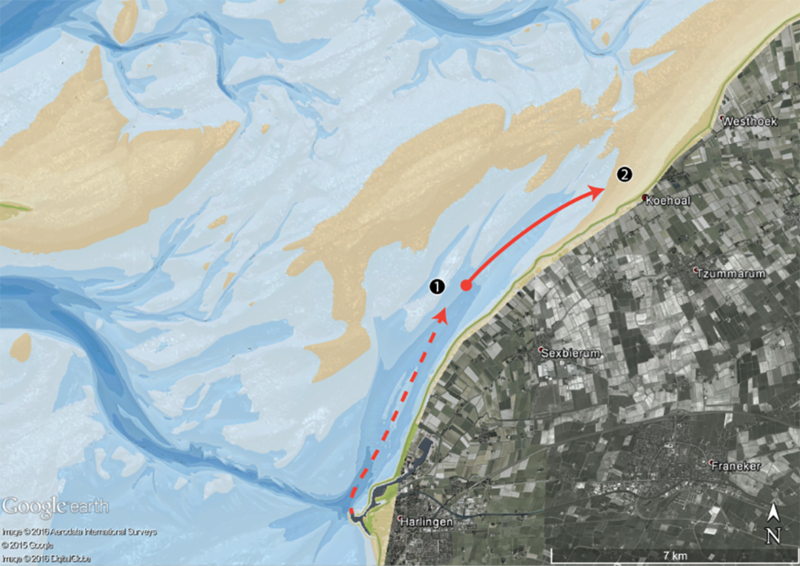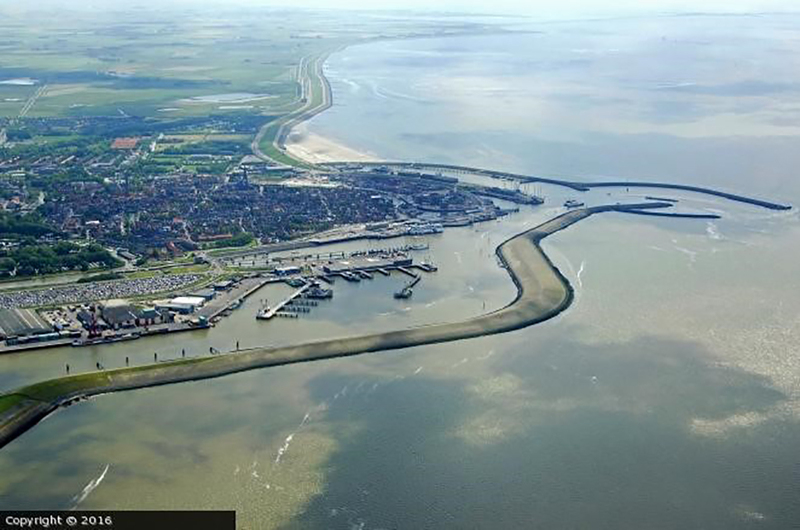Wetland enhancement
The Mud Motor pilot is integral part of the Building with Nature Program. 600,000 m3 of sediments dredged in the Port of Harlingen is being disposed at a specific location where local hydrodynamics are expected to pick it up and naturally transport it towards the nearby marsh. This generates several positive effects:
- Reduces recirculation towards the harbour, hence less maintenance dredging;
- Promotes the growth and stability of salt marshes, improving the Wadden Sea ecosystem;
- Stabilizes the foreshore of the dykes, which leads to lower maintenance cost of the dyke.
The research program that is set up around this pilot project is analysing the effectiveness of this approach. The new disposal location was determined based on numerical model predictions and a tracer release study. The effectiveness of the Mud Motor in accreting the foreshore will be monitored through detailed bed level monitoring. To June 2017, 300,000 m3 of sediments (i.e. half of the total), was released. Field monitoring data that measure deposition and erosion patterns as well as sediment fluxes are being analysed during the summer of 2017. The remainder 300,000 m3 of sediments will be discharged during the fall of 2017 and winter of 2018.
Salt marsh accretion is the result of the balance between mud sediment deposition, sediment erosion and soil compaction. It is hypothesized that the sediment load of tidal flows over the salt marshes will increase due to the Mud Motor, thereby increasing accretion rates of these marshes, including the formation of a smooth gradation in the channel-flat-marsh system. A natural stabilizing factor for the accreted sediment is the development of perennial vegetation on the salt marsh. Perennial vegetation lowers the hydrodynamic energy from currents and waves, thereby increasing the sedimentation rates on the marsh. The root systems stabilize the soil which reduces the potential for erosion. As a result, a vegetated saltmarsh is likely to continue to accumulate sediment.
Graphical information:

